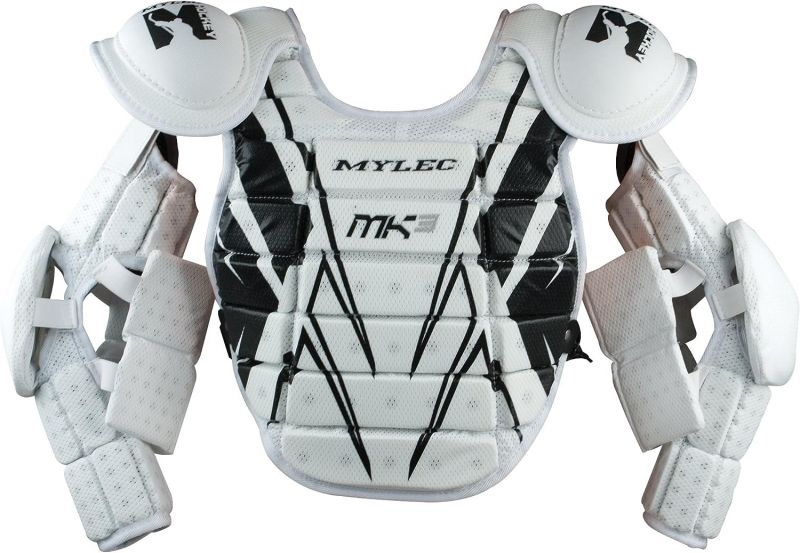How do the new 2023 lacrosse chest protector regulations affect player safety. What are the key changes in chest pad design and NOCSAE standards. Why are these updated regulations crucial for preventing commotio cordis in lacrosse players.
Understanding the New Lacrosse Chest Protector Regulations
The landscape of lacrosse safety equipment is undergoing significant changes in 2023. US Lacrosse and the National Operating Committee on Standards for Athletic Equipment (NOCSAE) have introduced new regulations for chest pads and protectors. These updates are designed to enhance player safety, particularly in preventing commotio cordis, a rare but potentially fatal cardiac event.
Commotio cordis occurs when a blunt impact to the chest area disrupts the heart’s rhythm, leading to sudden cardiac arrest. While uncommon, it poses a significant risk in youth sports, including lacrosse. The new regulations aim to minimize this risk by improving the protective capabilities of chest gear.
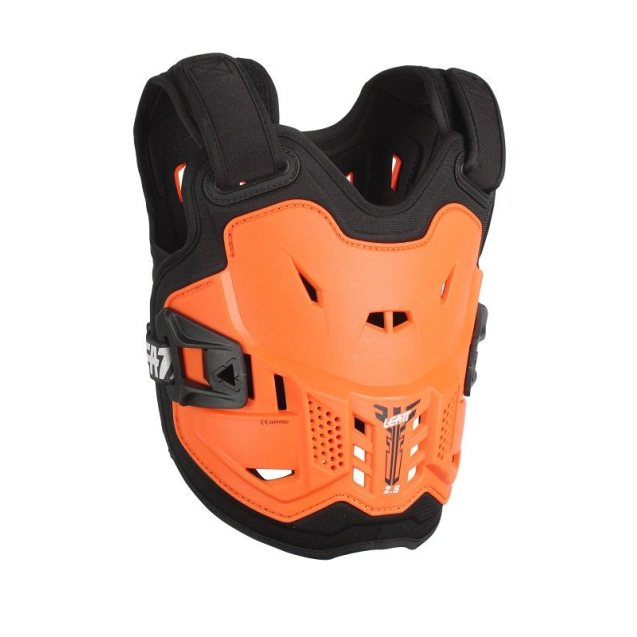
Key Features of the NOCSAE ND200 Standard
- Limits peak force transmitted to the heart to under 50 Newtons
- Requires force distribution over a larger surface area
- Mandates specific force decay rates to dissipate impact energy
- Ensures proper coverage of vulnerable cardiac regions
These stringent requirements are set to become mandatory for all youth levels starting in 2023, with high school and college teams following suit by 2025. This comprehensive approach to player safety marks a significant step forward in lacrosse equipment standards.
The Science Behind Commotio Cordis Prevention
Understanding the mechanism of commotio cordis is crucial to appreciating the importance of the new regulations. This rare condition occurs when a blow to the chest disrupts the heart’s electrical signals during a vulnerable phase of the cardiac cycle. The result can be ventricular fibrillation, a chaotic heart rhythm that can lead to sudden death if not immediately treated.
How do the new chest protectors help prevent this condition? The key lies in their ability to absorb and distribute impact energy. By limiting the peak force transmitted to the heart and spreading it over a larger area, the new protectors significantly reduce the risk of triggering the electrical disruption that leads to commotio cordis.
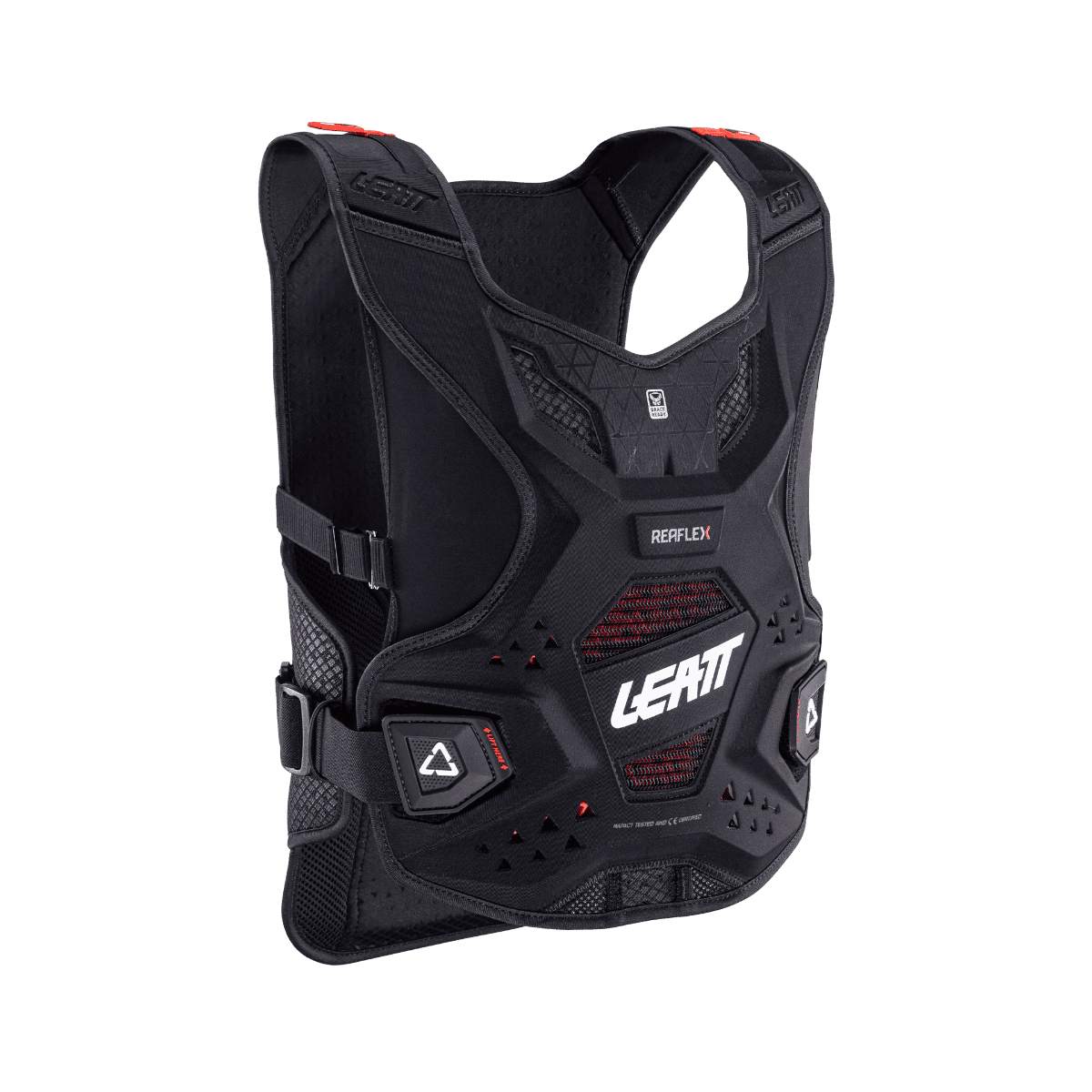
The Role of Force Distribution in Cardiac Protection
Force distribution is a critical aspect of the new NOCSAE ND200 standard. Traditional chest protectors often allowed impact forces to concentrate on small areas, potentially focusing dangerous levels of energy on the heart. The new regulations require protectors to spread impact forces over at least 150 square centimeters of surface area. This distribution helps prevent the focused blow that can trigger commotio cordis.
Why is force distribution so important? By spreading the impact over a larger area, the energy is dissipated more effectively, reducing the likelihood of a single point of impact reaching the critical force threshold that could disrupt the heart’s rhythm. This approach not only helps prevent commotio cordis but also provides better overall protection against other chest injuries.
Advancements in Chest Protector Design and Materials
The new regulations have spurred significant innovations in chest protector design and materials. Manufacturers are now utilizing advanced materials and engineering techniques to meet the stringent NOCSAE ND200 standards while maintaining comfort and flexibility for players.
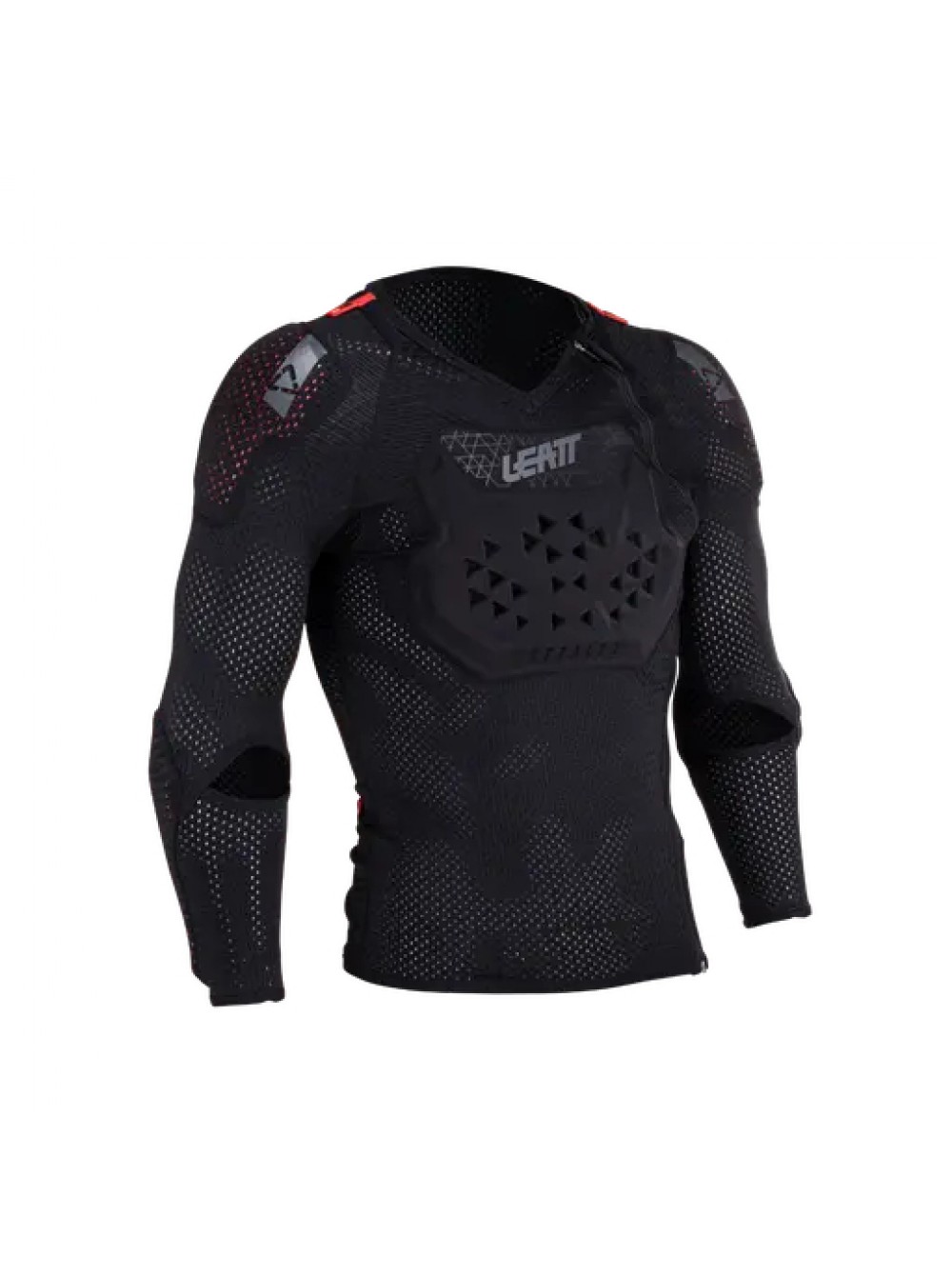
Cutting-Edge Materials in Modern Chest Protectors
- High-density foams with varying compression rates
- Gel inserts for enhanced shock absorption
- Breathable, moisture-wicking fabrics for comfort
- Lightweight, rigid plates for structural integrity
These materials are often combined in multi-layer designs, creating a protective system that can effectively absorb, distribute, and dissipate impact forces. The result is a new generation of chest protectors that offer superior protection without sacrificing player mobility or comfort.
Impact on Different Levels of Play
The implementation of the new chest protector regulations will have varying effects across different levels of lacrosse play. Youth leagues are at the forefront of this change, with mandatory compliance required starting in 2023. This early adoption reflects the higher risk of commotio cordis in younger players, whose chest walls are typically less developed and more susceptible to impact.
For high school and college players, the transition period extends to 2025, allowing more time for equipment upgrades and adjustments. However, many teams and players at these levels are expected to adopt the new standards earlier, recognizing the enhanced safety benefits.

Considerations for Professional Lacrosse
While professional leagues are not directly governed by US Lacrosse regulations, they often follow suit in adopting safety measures. The implementation of these new chest protector standards at the professional level could have a trickle-down effect, influencing equipment choices and safety protocols across all levels of the sport.
How might professional adoption impact the sport? It could lead to further innovations in protective gear, as manufacturers strive to meet the demands of elite athletes while adhering to the new safety standards. This could ultimately benefit players at all levels, as advancements in professional equipment often make their way to the broader market.
Proper Fit and Integration with Other Protective Gear
While the new regulations focus on the chest protector itself, proper fit and integration with other protective equipment are equally crucial for maximizing safety. A chest protector that meets NOCSAE ND200 standards but fits poorly or leaves gaps in coverage may not provide optimal protection.
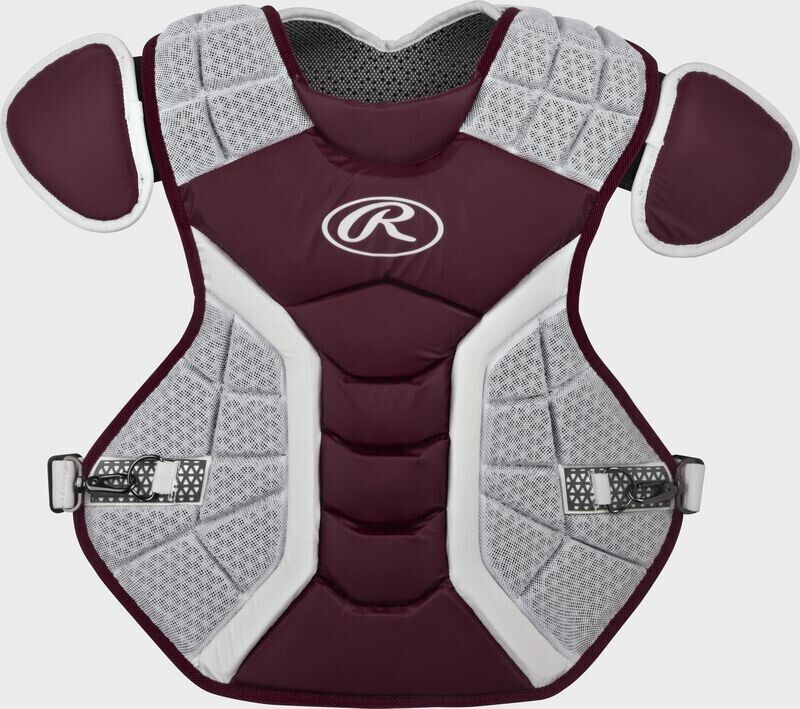
Tips for Ensuring Proper Chest Protector Fit
- Measure chest circumference and compare to manufacturer size charts
- Ensure the protector covers the entire sternum and extends to the bottom of the rib cage
- Check for snug fit without restricting breathing or movement
- Adjust straps for secure placement during play
- Verify proper overlap with shoulder pads to eliminate gaps in coverage
Integrating the chest protector with other protective gear is essential for comprehensive safety. Shoulder pads, in particular, should work in tandem with the chest protector to provide continuous coverage across the upper body. Players and coaches should pay close attention to how different pieces of equipment interact to ensure no vulnerable areas are left exposed.
Financial Implications and Equipment Upgrades
The introduction of new safety standards inevitably raises questions about the financial impact on players, teams, and organizations. While the enhanced protection is undoubtedly valuable, the cost of upgrading equipment to meet the new regulations is a consideration for many in the lacrosse community.
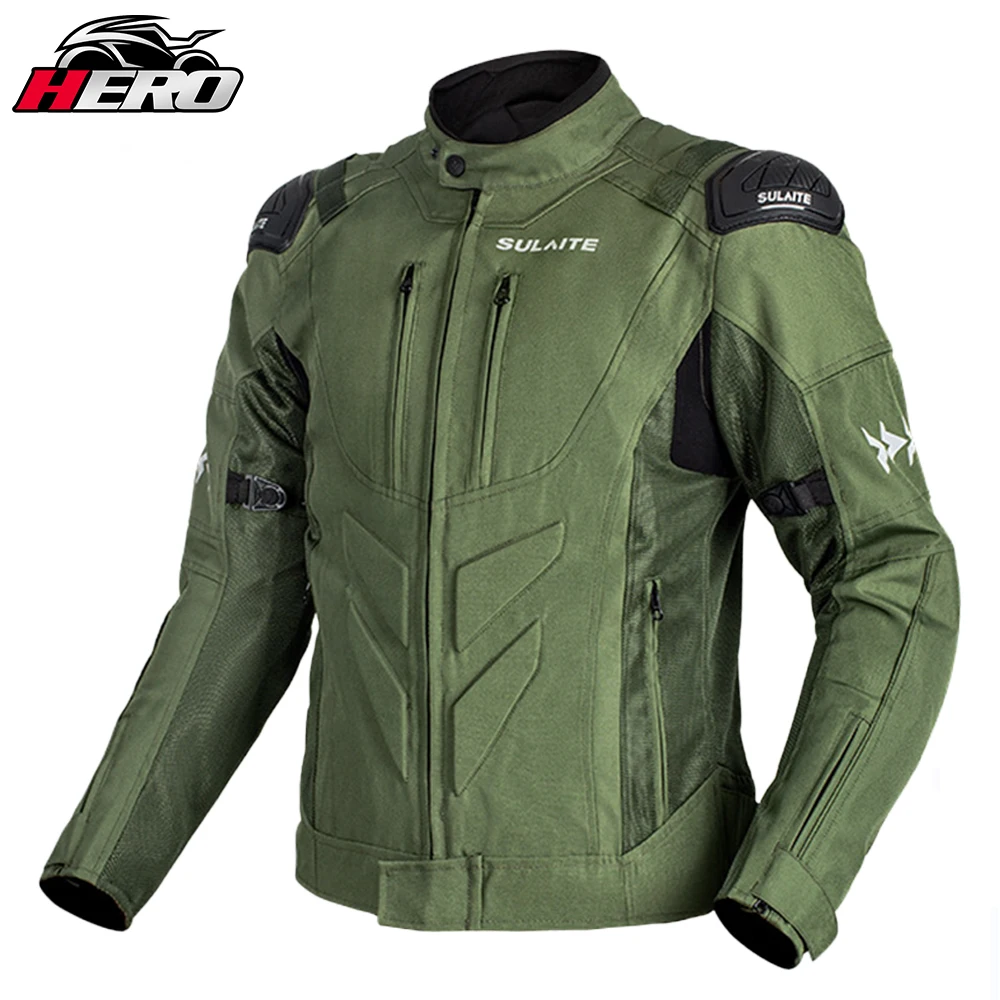
For individual players and families, the transition to NOCSAE ND200 compliant chest protectors may require an investment in new equipment. However, this cost should be weighed against the significant improvement in safety and the potential to prevent serious injuries.
Strategies for Managing Equipment Upgrades
- Plan ahead for equipment replacement, budgeting for the upgrade over time
- Look for sales or discounts on compliant gear as manufacturers increase production
- Consider equipment sharing programs or pre-owned options from reputable sources
- Explore potential financial assistance from local lacrosse organizations or sponsors
For teams and leagues, the financial impact may be more substantial, particularly if providing equipment to players. However, many organizations view this as a necessary investment in player safety and the long-term health of the sport. Some are exploring phased implementation approaches or seeking sponsorships to help manage the costs associated with equipment upgrades.
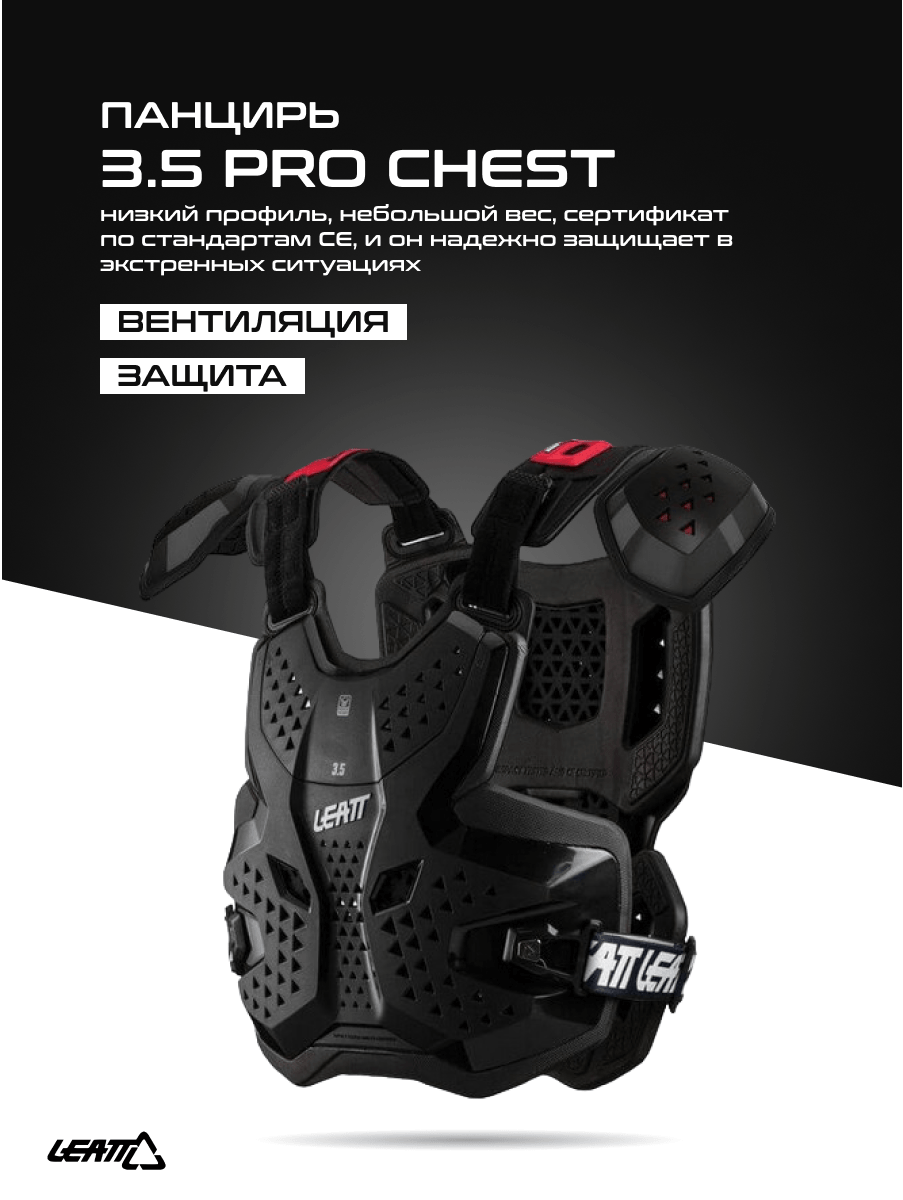
The Future of Lacrosse Safety and Equipment Innovation
The implementation of the NOCSAE ND200 standard for chest protectors is likely just the beginning of a new era in lacrosse safety equipment. As our understanding of sports-related injuries evolves, we can expect to see continued innovations in protective gear across all aspects of the game.
What might the future hold for lacrosse safety equipment? Some potential areas of development include:
- Smart materials that adapt to impact forces in real-time
- Integrated sensor systems for monitoring player safety during games and practices
- Customized protective gear tailored to individual player physiology
- Advancements in helmet design to further reduce concussion risks
- Innovative padding solutions for other vulnerable areas like the kidneys and spine
These potential innovations could revolutionize player safety in lacrosse and potentially influence protective equipment design in other sports as well. As technology continues to advance, we may see a convergence of safety, performance, and comfort in ways that were previously unimaginable.
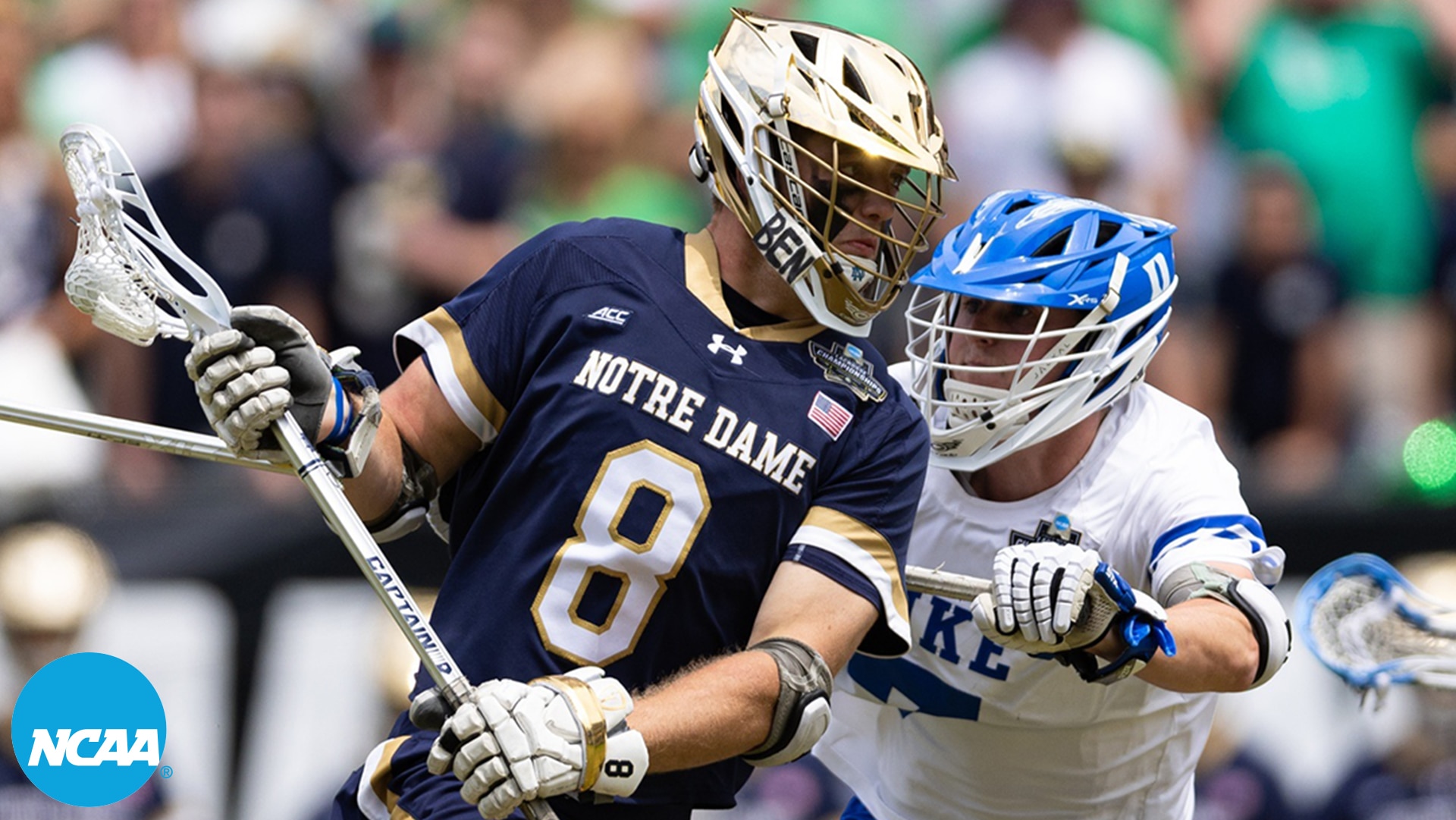
The Role of Data and Research in Equipment Development
The development of the NOCSAE ND200 standard was heavily informed by scientific research into commotio cordis and impact biomechanics. This data-driven approach to equipment design is likely to become even more prominent in the future.
How might data shape the future of lacrosse safety? Advanced analytics and real-time monitoring could provide insights into the types of impacts players experience during games and practices. This information could then be used to refine protective gear designs, creating equipment that is specifically tailored to the demands of the sport.
Moreover, ongoing research into sports-related injuries and their prevention will continue to inform safety standards and equipment design. As our understanding of these issues grows, we can expect to see increasingly sophisticated and effective protective gear for lacrosse players at all levels.
Education and Awareness: Key Components of Player Safety
While advanced equipment plays a crucial role in player safety, education and awareness are equally important. The introduction of new chest protector regulations provides an opportunity to reinforce safety practices and protocols across the lacrosse community.

Essential Safety Education Topics for Players and Coaches
- Understanding the risks of commotio cordis and other impact-related injuries
- Proper fitting and maintenance of protective equipment
- Recognizing signs of potential cardiac events and other emergencies
- Importance of immediate response and access to automated external defibrillators (AEDs)
- Safe playing techniques to minimize dangerous impacts
Coaches, in particular, play a vital role in promoting a culture of safety within their teams. By emphasizing the importance of proper equipment use and safe play, they can help reduce the risk of injuries and ensure that players take their safety seriously.
Parents and spectators also benefit from increased awareness of safety measures. Understanding the new regulations and the reasons behind them can help create a supportive environment for implementing and maintaining high safety standards in lacrosse.
Incorporating Safety Education into Training Programs
Many lacrosse organizations are now integrating comprehensive safety education into their training programs. This approach ensures that players not only have access to the latest protective equipment but also understand how to use it effectively and why it’s important.
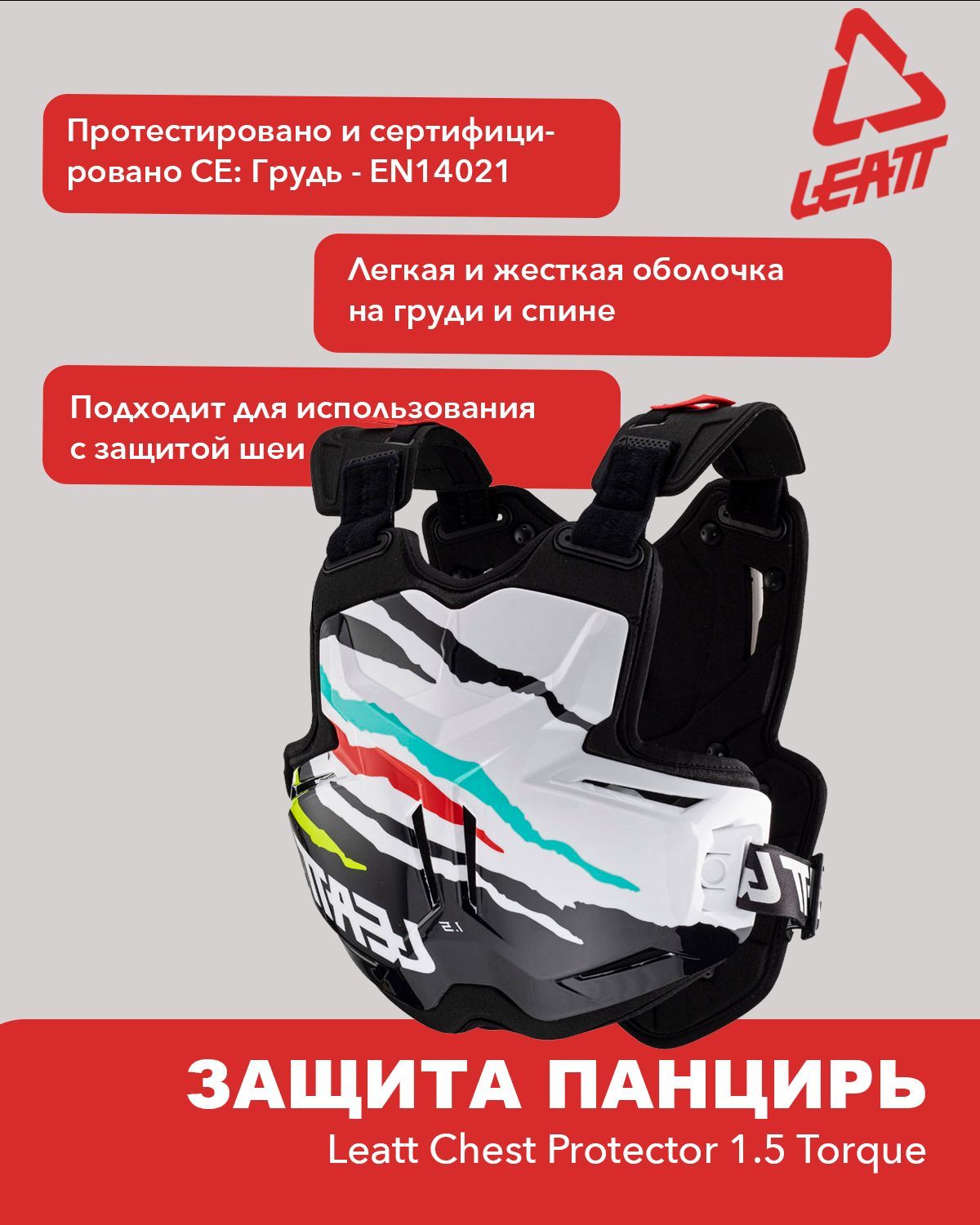
These educational initiatives often include:
- Pre-season safety briefings for players and parents
- Regular equipment checks and fitting sessions
- Integration of safety topics into practice drills and game preparations
- Collaboration with medical professionals for expert input and training
By making safety education an integral part of the lacrosse experience, the sport can foster a culture where protection is valued as highly as performance. This holistic approach to player safety, combining advanced equipment with comprehensive education, sets a new standard for sports safety that could influence other athletic disciplines as well.
Balancing Safety and Performance in Lacrosse Equipment
As lacrosse equipment evolves to meet new safety standards, a key challenge is maintaining the balance between protection and performance. Players need gear that keeps them safe without hindering their ability to play at their best. This balance is crucial for the acceptance and effectiveness of new safety measures.

Key Considerations in Equipment Design
- Weight and mobility: Ensuring protective gear doesn’t slow players down
- Flexibility: Allowing for full range of motion in all playing positions
- Breathability: Managing heat and moisture for player comfort
- Durability: Creating equipment that can withstand the rigors of regular play
- Customization: Offering adjustable features to fit various body types
Manufacturers are rising to this challenge by employing advanced materials and innovative design techniques. For example, some new chest protectors use layered, multi-density foams that provide rigid protection on impact but remain flexible during normal movement. Others incorporate ventilation channels and moisture-wicking fabrics to enhance comfort during extended play.
The goal is to create protective gear that players barely notice during play, allowing them to focus on their performance while still benefiting from enhanced safety features. As these designs continue to evolve, we may see a new generation of lacrosse equipment that seamlessly integrates protection and performance.

Player Feedback and Iterative Design
To achieve the optimal balance between safety and performance, equipment manufacturers are increasingly relying on player feedback throughout the design process. This iterative approach allows for real-world testing and refinement of prototypes before final production.
How does this process benefit players? By incorporating feedback from athletes at various levels of play, manufacturers can address specific concerns and preferences. This might include adjustments to pad placement for better mobility, tweaks to strap systems for improved fit, or modifications to materials for enhanced comfort.
This collaborative approach to equipment design not only results in better products but also helps build player trust and acceptance of new safety standards. When athletes feel that their needs and experiences are reflected in the gear they’re required to wear, they’re more likely to embrace and properly use the equipment.
The Global Impact of New Lacrosse Safety Standards
While the new chest protector regulations originate from US Lacrosse and NOCSAE, their impact extends far beyond the United States. As one of the leading nations in lacrosse, changes in U.S. equipment standards often influence the global lacrosse community.

International Adoption of Safety Standards
How are other countries responding to these new safety measures? Many international lacrosse organizations are closely monitoring the implementation of the NOCSAE ND200 standard and considering similar adoptions. This global interest reflects a growing awareness of player safety issues across all levels of the sport.
Some potential international impacts include:
- Harmonization of equipment standards for international competitions
- Increased focus on commotio cordis prevention in emerging lacrosse nations
- Collaboration between equipment manufacturers to meet global demand
- Exchange of research and data on equipment effectiveness across borders
As these safety standards gain traction internationally, we may see a more unified approach to player protection in lacrosse worldwide. This could lead to improved safety outcomes for players regardless of where they compete and potentially influence safety standards in other sports as well.
Challenges in Global Implementation
While the benefits of adopting advanced safety standards are clear, implementing them on a global scale presents several challenges. These may include:

- Varying resources and infrastructures across different countries
- Differing regulatory environments for sports equipment
- Cultural attitudes towards risk and safety in sports
- Economic disparities affecting access to advanced equipment
Addressing these challenges will require cooperation between international lacrosse organizations, equipment manufacturers, and local governing bodies. Creative solutions, such as equipment donation programs or subsidized production for developing lacrosse nations, may help bridge the gap and ensure that players worldwide can benefit from these safety advancements.
As the global lacrosse community works towards universal adoption of these new safety standards, the sport has an opportunity to set a precedent for international cooperation in athlete protection. This collaborative effort could serve as a model for other sports facing similar safety challenges across diverse global contexts.
Introduction to new lacrosse chest protector rules
The game of lacrosse is changing. New regulations from US Lacrosse and NOCSAE are shaking up the required protective gear, especially chest pads and protectors. These updates aim to better shield players’ hearts and vital organs from potentially fatal commotio cordis events. But what do the new 2022 rules entail exactly? And how will they impact your protective gear choices?
First, let’s briefly overview commotio cordis and why it’s a focus. This condition occurs when a blunt but often relatively mild blow to the chest disrupts the heart’s rhythm, leading to sudden cardiac arrest. While rare, it’s most prevalent in youth sports like lacrosse, causing approximately 20 to 30 deaths per year. By improving chest pad protection, the chance of commotio cordis can be reduced.
That’s where the new NOCSAE ND200 performance standard comes in. ND200 establishes higher certification tests for cardiac safety. Lacrosse chest protectors now must limit peak force transmitted to the heart to below 50 Newtons. They also must distribute impact force over more surface area. This helps prevent the lethal focused blow that triggers commotio cordis.
In addition, US Lacrosse made ND200 certification mandatory for all youth levels starting in 2022. The same requirement extends to high school and college men’s and women’s teams in 2025. That means all lacrosse chest protectors will soon meet these strict new benchmarks for cardiac protection.
How does this impact you? If buying new gear, look for the ND200 label to ensure the latest certified pads. And don’t just focus on chest pads – make sure shoulder pads integrate properly for full coverage. While commotio cordis is rare, these added precautions give peace of mind against hidden risks. Stay protected and play on!
Lacrosse chest pad design and NOCSAE standards
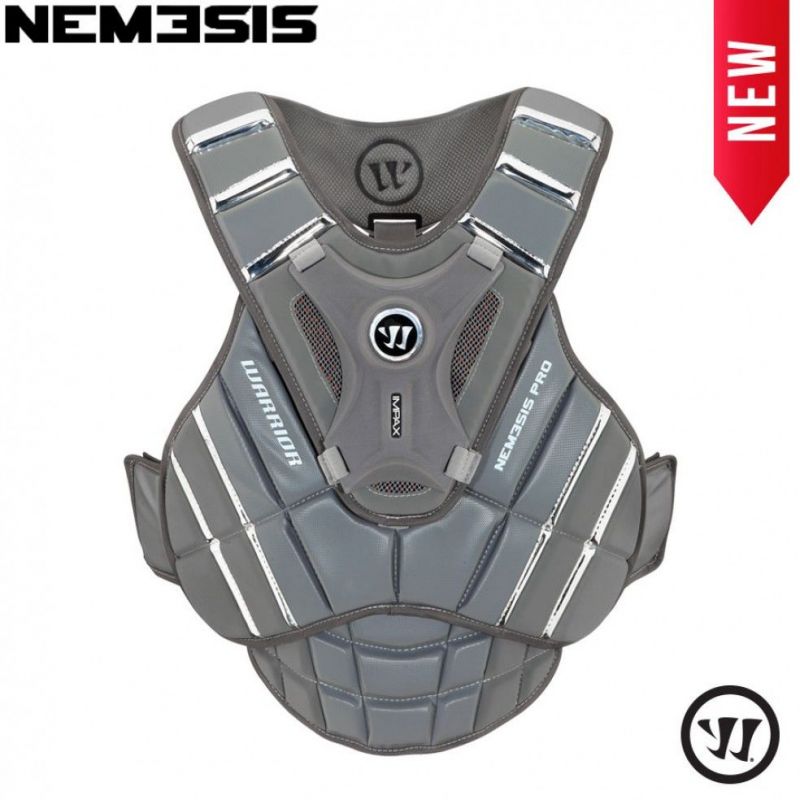
Lacrosse chest protectors have come a long way from the days of thin cotton shirts with minimal padding. Advances in materials and engineering now enable pads to effectively shield the heart and ribs from injury. But how exactly are modern lacrosse chest pads designed and tested?
It all comes down to meeting stringent NOCSAE standards. NOCSAE, the National Operating Committee on Standards for Athletic Equipment, is the leading nonprofit dedicated to safety in sports gear. For chest protectors, their ND200 performance standard is key.
ND200 sets requirements for things like material rigidity, pad size, and impact absorption. To meet certification, pads must first pass lab tests using specialized pneumatic rams. These ram chest protectors with game-level forces, ensuring they sufficiently cushion blows.
Testing evaluates factors like peak force, force spread, and force decay over time. Peak forces to the heart must remain under strict thresholds. Meanwhile, force must distribute over wider surface areas rather than focused spots.
Padding materials are also scrutinized. Foams, gels, and polymers must strike the right balance between softness and resilience. Multi-layer, ventilated designs allow for both cushioning and breathability.
In addition, straps, shells, and protective plates are checked for structural integrity. The goal is creating a secure, form-fitting shield covering vulnerable cardiac regions on the chest’s left side.
Through repeated lab testing and tweaking, manufacturers can perfect pads that align with NOCSAE ND200. This approval gives athletes, parents, and coaches confidence in the cardioprotective capabilities of the equipment.
ND200 performance requirements for chest protectors

NOCSAE’s ND200 standard sets precise performance benchmarks for lacrosse chest protectors. What are the key criteria that pads must meet to achieve ND200 certification?
There are three core elements of the ND200 requirements focused on reducing risk of commotio cordis cardiac events:
- Peak force limits
- Force distribution over area
- Force decay over time
For peak force, chest pads cannot allow over 50 Newtons of force to be transmitted to the heart region. To put that in perspective, a baseball hitting the heart at just 30 mph generates around 50 Newtons of force. By limiting transmitted impact to under 50 Newtons, the chances of disrupting the heart’s rhythm are reduced.
In addition to peak force limits, ND200 requires force to spread over a wider surface rather than a concentrated spot. At least 150 square centimeters must contact the body on impact to disperse energy.
Finally, the rate of force decay is evaluated. Padding must dampen and dissipate energy over several milliseconds following impact. This helps prevent a single deadly blow to the heart’s surface.
Through repeated lab tests smashing pads with calibration rams, manufacturers can refine designs to align with all ND200 metrics. This ensures lacrosse chest protectors certified under the standard offer maximum protection according to NOCSAE criteria.
While ND200 does not guarantee safety, meeting its impact force standards represents a big step forward. By tuning pads to satisfy all requirements, the threat of commotio cordis faced by athletes can be significantly reduced.
SEI certification process for lacrosse pads
For lacrosse chest protectors to be approved under NOCSAE’s ND200 standard, they must undergo certification testing by the Safety Equipment Institute (SEI). What does this evaluation process entail?
SEI is an independent organization that validates sports protective equipment meet performance benchmarks. For ND200, their role is confirming that submitted lacrosse chest pads comply with all standard requirements.
Manufacturers first send production samples to SEI’s specialized labs. There, test engineers put pads through a battery of intense impact tests using pneumatic rams and calibrated sensors.
The rams strike pads with precisely controlled forces simulating game collisions. Throughout testing, factors like impact force, area spread, and force decay over milliseconds are measured.
Test points focus on the heart region on the left side of the chest. Repeated blows from multiple angles evaluate the pad’s ability to shield this vital area.
If testing confirms pads limit peak force under 50 Newtons, distribute force over 150+ square centimeters, and sufficiently dampen impacts, they pass ND200 criteria. Additional checks evaluate materials, construction quality, straps, and durability.
Pads must consistently meet all standards across multiple samples to receive SEI certification under ND200. This approval is granted for a set time period, after which recertification is required to ensure continued compliance.
With SEI’s independent verification, athletes can trust that ND200-certified lacrosse chest protectors offer advanced heart protection meeting NOCSAE’s highest standards.
New 2022 regulations from US Lacrosse
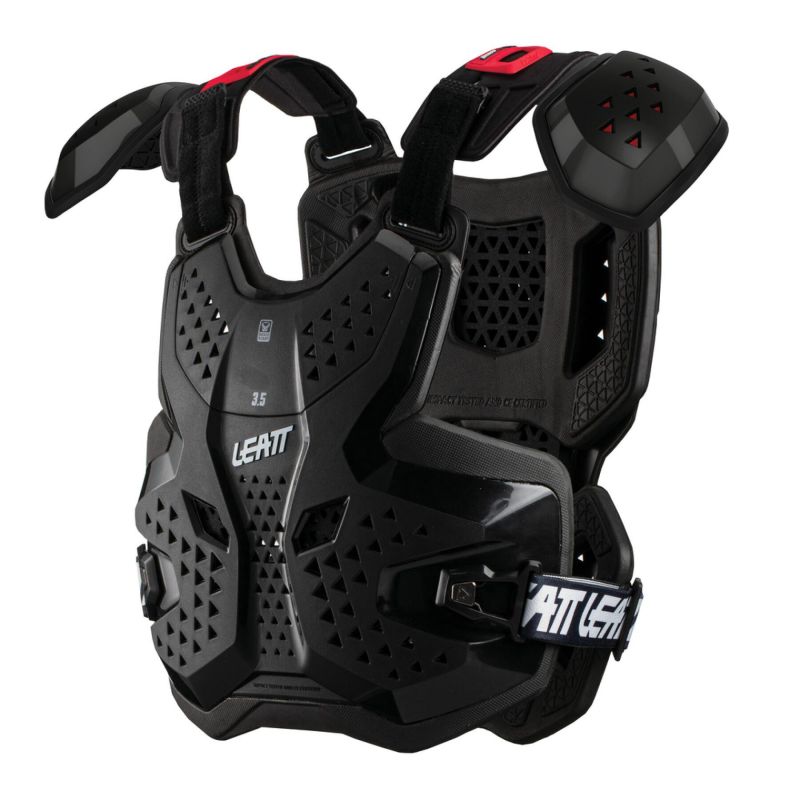
In addition to the ND200 standard, new rules from US Lacrosse are changing chest protector requirements in the sport. What regulations did US Lacrosse introduce in 2022?
The main update from US Lacrosse is making NOCSAE ND200 certification mandatory for all youth lacrosse teams. Previously, some youth levels only required NOCSAE-approved protective gear, but not specifically ND200-rated.
Here are the key details on US Lacrosse’s 2022 youth chest protector rules:
- ND200 certification required for all boys’ youth teams at U15, U13, U11, and U9 levels
- ND200 certification required for all girls’ youth teams at U15, U13, U11, U9, and U8 levels
- Applies to both youth recreation and travel/club lacrosse teams
- Rules effective as of January 1, 2022
This policy aims to boost cardiac protection for all young athletes. US Lacrosse cited the higher risk of commotio cordis among youth players in the rule change.
Additional changes are coming in 2025, when ND200 certification becomes mandatory for all US high school lacrosse teams. The NCAA also intends to adopt the ND200 requirement for college lacrosse around the same timeline.
Together, these new rules from US Lacrosse and other governing bodies will push all lacrosse chest protectors to meet the advanced ND200 benchmark for safety.
How the rules impact goalie and field chest protectors
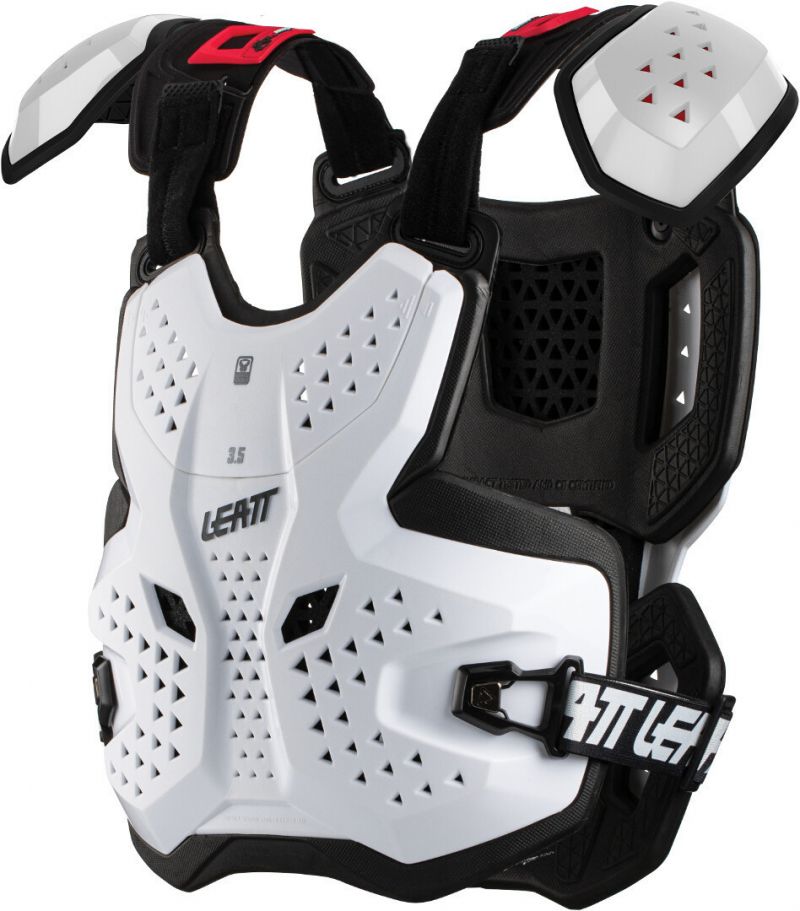
The new lacrosse chest protector regulations apply to all positions, but have slightly different implications for goalie vs. field player gear.
For goalies, the expanded ND200 requirement means their existing chest protectors will need recertification to the updated standard. Major manufacturers like Maverik, STX, and Warrior should transition their goalie gear lines to ND200 approval over the next few years.
Goalie chest pads offer robust protection by nature of the position. But updating foam inserts, outer plastic plates, and inner lining materials can fine-tune these pads to meet ND200 metrics.
For field players, the new rules may accelerate the adoption of dedicated chest protectors beyond just shoulder pads. Adding a heart-shielding chest pad layered under the shoulders better protects against commotio cordis risks.
Several brands now offer ND200-rated chest protectors for field players, including Maverik, Cascade, STX, and Epoch. As awareness increases, expect to see these integrated pads become more prevalent.
Youths and high school players should check with coaches to ensure gear meets their league’s updated ND200 requirements. Parents can also use the certification to guide purchases of new chest protective equipment.
While regulations are evolving, brands are responding with safer lacrosse-specific chest padding. Proper certification gives peace of mind that essential heart protection is in place.
Review of popular NOCSAE chest protectors and pads
With the ND200 standard in focus, lacrosse players want to know which chest protectors deliver the best certified protection. Here’s a look at some top NOCSAE-rated pads on the market.
For field players, the Cascade Model LP headlines recommended options. Its hybrid design combines hard plastic plates over the heart with soft foam for full coverage and mobility. Vented biofoam materials keep you cool while dispersing impacts.
Maverik’s Rome RPM is another excellent choice, with an adjustable rib protector for customized fit. Its dual-density foam absorbs blows while a vented shell increases airflow.
The Epoch Dragonfly and STX Cell chest pads also make great ND200-certified selections. Both offer a sleeve plus removable heart-shielding plates for adaptable protection.
On the goalie side, STX’s Shield 500 chest protector is a top pick. Its segmented HD foam with adaptive flex zones provide both robust cushioning and mobility. The anatomical wrap-around shape limits gaps in coverage.
Warrior’s Ritual G5 goalie chest pad is another solid ND200 choice. Its mix of foam, plastic, and removable heart plates offer protection for all situations in the crease.
When shopping for chest pads, always verify the product has earned NOCSAE ND200 certification. This ensures gear meets the latest safety benchmarks designed to reduce commotio cordis risks.
Finding the right chest plate size and fit
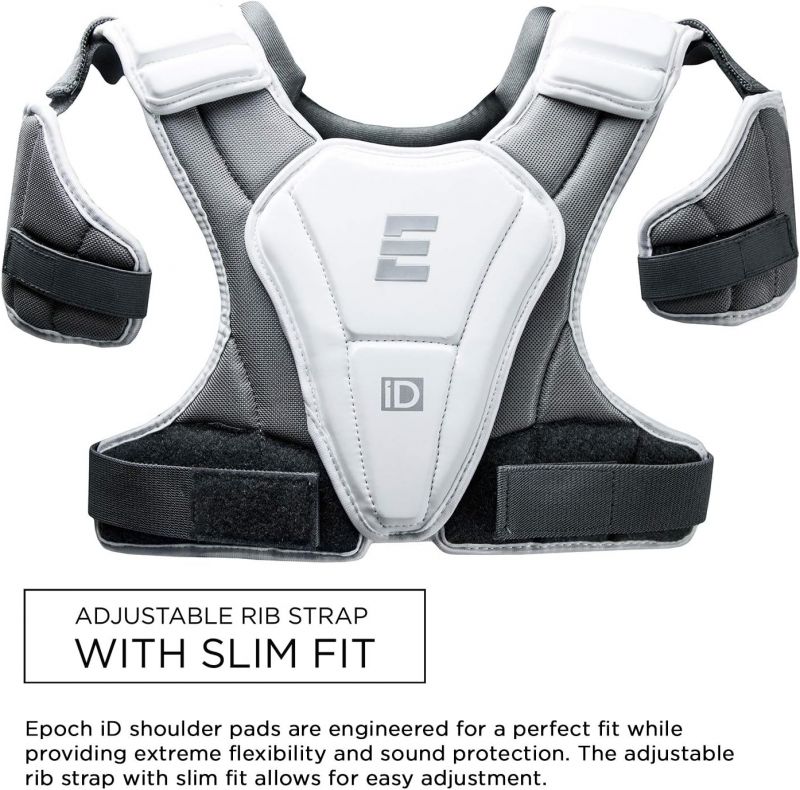
Lacrosse chest protectors only work if they fit properly. What size plate should you get and how do you ensure a snug, secure fit?
First, consult each manufacturer’s sizing charts to translate your measurements into their recommended chest protector size. Key dimensions are your chest circumference right under the pectoral muscles, along with the width between the nipples.
In general, the chest plate should fit snugly without constricting breathing or movement. Straps should criss-cross tightly over the back and shoulders to hold the pad firmly against the chest wall.
For field players, women’s sizes and youth sizes are available to better match girl’s and children’s bodies. Measure carefully and pick the size range that aligns with your measurements.
Goalies require full torso coverage, so measure from the top of the collarbone to just above the navel. Match this length to the goalie chest protector sizes offered.
Try the pad on with your full gear to test mobility. Some restriction is expected, but you should be able to swing your crosse and cradle comfortably. The pad shouldn’t lift or shift out of position.
Break in the straps over a few practices so they contour to your body shape. You want a personalized, second-skin fit that locks the chest plate in place against the vital left chest area through your lacrosse motions.
A snug, stay-put chest protector lets you play with confidence, knowing your heart is shielded against hazardous blows.
New tech and materials used in chest protectors

Advancing technology and new materials are enabling lacrosse chest protectors to become lighter, more breathable, and safer all at once. What kind of tech innovations are shaping modern pads?
One key material is advanced foams engineered specifically for athletic protection. Multi-layer foam inserts provide graded shock absorption, with firm outer layers and softer inner cushions.
Venting and perforations in these foam pads boost airflow for cooling and comfort. Moisture-wicking liner fabrics keep perspiration under control.
Additional pads often use flexible, breathable polymers instead of rubber or heavy plastics. These maintain protection while conforming to an athlete’s body and venting heat.
For structural plating, newer polyethylene blends allow thinner but stronger shielding over vital organs. Anatomical plate shapes increase coverage and stability.
Embedded sensor fabrics are an emerging tech that may soon monitor chest impacts in real-time. This data could better inform equipment safety advances and player monitoring.
Buckles, strap adjustment systems, and form-fitting sleeve anchors also utilize modern designs adapted from other protective gear fields.
Through thoughtful engineering, next-gen lacrosse chest pads achieve the protection of bulkier older pads in far lighter, cooler, and lower profile packages.
Importance of heart protection in lacrosse
Lacrosse is an exciting yet physical game with inherent injury risks. That’s why proper chest and heart protection is so vital for all players that choose to take the field.
The adrenaline of competition makes it easy to forget that a lacrosse ball can travel over 100 mph during play. Combined with speedy checks, hits, and falls, blows to the chest are common.
While cracked ribs and bruises are painful, a larger danger is commotio cordis – disruption of the heart’s rhythm from blunt impact that triggers sudden cardiac arrest. Young athletes are especially vulnerable.
Every player remembers the tragedies of boys who left the field under their own power, only to collapse moments later. Proper chest pads help prevent such hidden cardiac dangers.
By shielding the heart from hazardous peak forces, quality pads reduce risks exponentially. New NOCSAE standards validate stronger, better engineered protection.
No gear can offer perfect safety, but smart precautions go a long way. For parents, coaches and players alike, trusted chest pads provide peace of mind to enjoy the game to its fullest.
Lacrosse deserves passion, not peril. Keep the heart protected and beat the odds against commotio cordis once and for all.
Lacrosse shoulder pad integration with chest pads
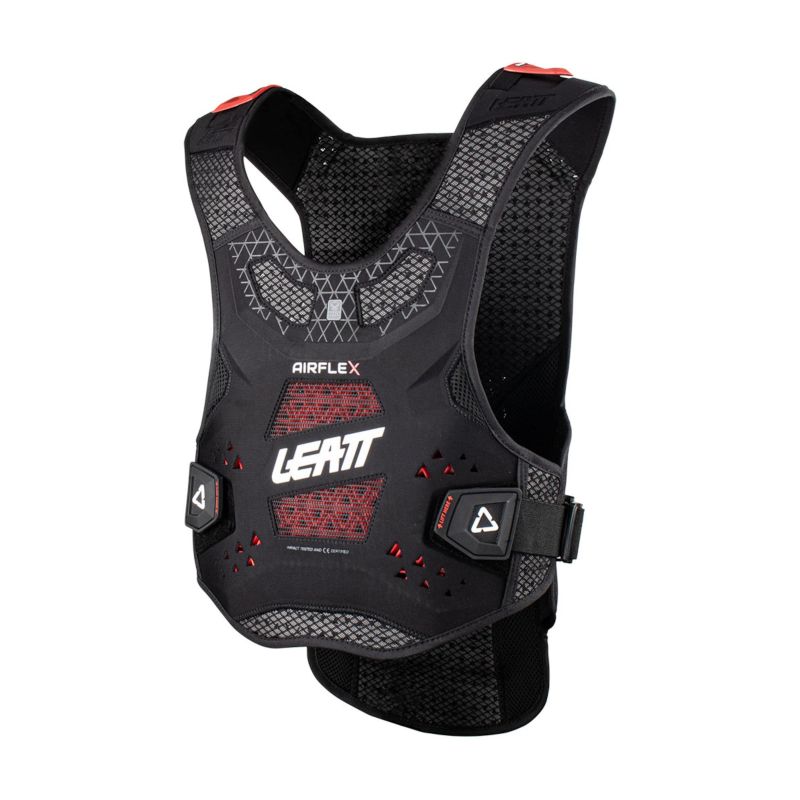
For full protection, lacrosse chest pads must work in conjunction with shoulder pads. What considerations ensure proper integration?
First, choose chest and shoulder pads from the same manufacturer if possible. They’ll be engineered to complement one another. Pad straps should align cleanly without gaps.
The bottom of the shoulder caps should overlap the top area of the chest plate. This prevents any direct exposure at the collarbone and sternum.
For field players, a stretchable sleeve anchor on many chest pads helps connect under the shoulder pads for stability. The sleeve also bridges any minimal gaps.
Proper strap tightness is critical – you want the chest pad held snugly against the ribs without limiting mobility. The shoulder pad straps keep everything locked in place.
Ensure no poking or chafing occurs where the two pads overlap. Trim or pad strap ends if needed to eliminate irritation.
Test mobility by simulating crosse cradling, checking, running, and fall impacts. The pads should move as a single extension of your body.
By selecting compatible shoulder and chest protectors and taking time to fit properly, you can create a reinforced shield over cardiac and torso regions.
Buying tips for new chest protector regulations
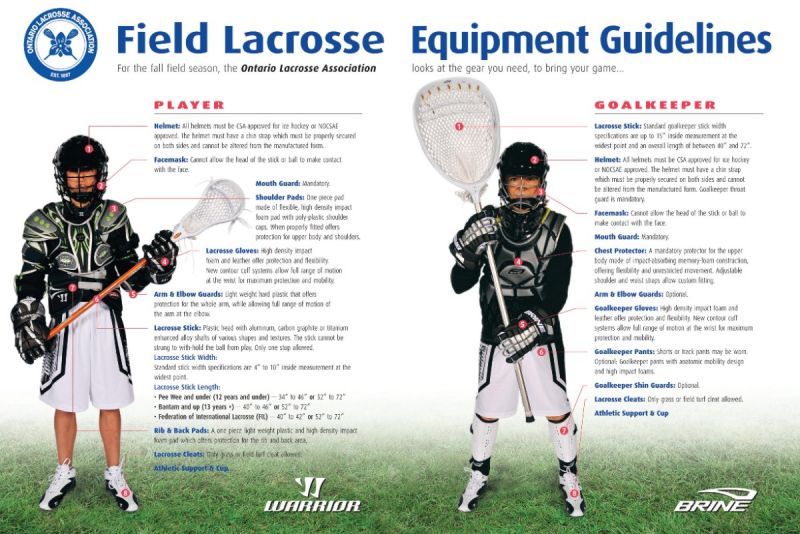
With changing lacrosse chest protector rules, it can get confusing when shopping for new gear. What buying guidance can help you navigate the regulations?
First, verify the specific ND200 certification required for your league and age level. Youth, high school, college, and pros have slightly different adoption timelines.
For 2022 and beyond, look for the NOCSAE ND200 tag on any new chest protector purchases. This validates they meet the latest standards.
On product websites, manufacturers will highlight ND200 certification prominently if their gears complies. Be wary of pads lacking the ND200 call-out.
When in doubt, contact the equipment maker directly for confirmation on a product’s certification status.
For goalies, nearly all new models will shift to ND200 over this season. Field player pads may take a bit longer to fully transition.
If finances allow, go beyond the minimum regs and choose ND200 pads purpose-built for lacrosse. They offer robust, sport-specific protection.
Follow sizing charts closely and ensure proper strap adjustment for a secure fit. A snug chest pad performs best and stays positioned against impacts.
With attention to certifications and fit, you can equip yourself reliably under the evolving youth and high school lacrosse guidelines.
Frequently asked questions about new rules
The updated chest protector regulations spark lots of questions from players, parents, and coaches. Here are answers to some common FAQs.
Do the new rules apply to lacrosse helmets too?
No, the ND200 standard is focused specifically on chest pads. Helmets have their own NOCSAE certification process and requirements.
Can I just add some extra foam to my old pads?
Adding makeshift padding likely won’t satisfy ND200 criteria. It’s best to replace non-certified protectors with new ND200 models engineered to meet the standard.
What’s the penalty for wearing old, non-certified pads?
Players violating the rules would be barred from participating until they meet the mandated chest protector certification for their age level and league.
Do college and pro players need to switch pads too?
Not yet, but ND200 will be adopted at higher levels soon. Many pro players already wear ND200 gear for added protection.
Can chest pads prevent all commotio cordis events?
No protective gear can guarantee safety, but ND200-rated pads drastically reduce risk compared to alternatives.
